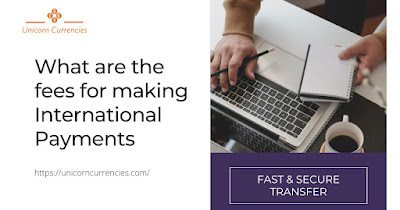What Are the Fees for Making International Payments? A Detailed Guide
International payments are becoming more and more common in today's global economy. Whether you need to send money to a loved one in another country or pay for goods and services from a foreign supplier, you may be wondering about the fees involved. In this article, we will take a closer look at the fees associated with making international payments, and provide some examples to help you better understand the costs involved.
Types of Fees for International Payments
When making an international payment, there are several types of fees you may encounter. These can include:
Transaction fees: This is a fee charged by the provider for processing the transaction. Some providers charge a flat fee, while others charge a percentage of the transaction amount. For example, let's say you want to send $1,000 to a supplier in Germany. If your provider charges a 1% transaction fee, you would need to pay $10 in fees.
Exchange rate fees: When sending money between currencies, you'll typically need to convert your funds into the recipient's currency. Exchange rates can fluctuate, and providers may charge a fee for the exchange. For example, let's say you want to send $1,000 to a supplier in the United Kingdom, and the current exchange rate is 1 USD = 0.75 GBP. If your provider charges a 3% exchange rate fee, you would receive £750, and the provider would keep £22.50 as a fee.
Correspondent bank fees: When sending money internationally, the transaction may pass through several banks before reaching the recipient. Each bank may charge a fee for processing the transaction, known as a correspondent bank fee. For example, let's say you want to send $1,000 to a supplier in Japan, and the transaction must pass through a correspondent bank in Canada. If the correspondent bank charges a $15 fee, you would need to pay this fee in addition to any other fees.
Receiving fees: The recipient may also be charged a fee for receiving the payment. This is typically the case when the recipient's bank charges a fee for receiving international payments. For example, let's say you want to send $1,000 to a friend in Mexico. If the recipient's bank charges a $20 receiving fee, your friend would receive $980.
Factors That Affect the Cost of International Payments
The fees associated with international payments can vary depending on several factors, including:
The countries involved: The fees may vary depending on the countries involved in the transaction. Some countries may have higher fees than others.
The payment method: The fees may also vary depending on the payment method used. For example, wire transfers may have higher fees than online transfers.
The provider: The fees may vary depending on the provider you use. Some providers may offer more competitive fees than others.

.jpg)
.jpg)
.jpg)
Comments
Post a Comment